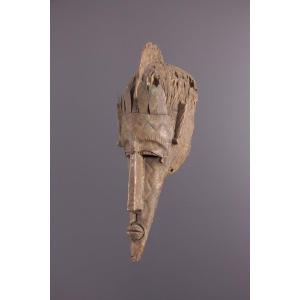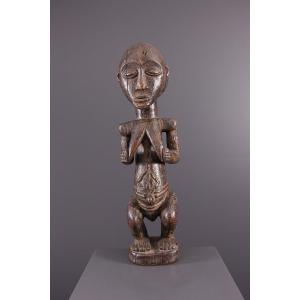In central and southern Mali, this sculpture embodies the Ciwara, a half-antelope, half-horse creature, also called "land beast". For the Bambara, also known as "Bamana", often described as "unbelievers" by Muslims, this legendary figure is said to have taught agriculture to humanity and offered the first cereal. The crest, attached to a basketry hat using raffia ties, was worn on the top of the skull. These crests accompanied the dancers during the rituals of the tòn, an association dedicated to agricultural work. The masks jumped across the fields to chase away nyama, evil scents, detect dangers, and flush out malevolent spirits who could steal the souls of cultivated plants as well as the vitality of their seeds.
Item accompanied by its certificate of authenticity.
PS: what does the certificate of authenticity consist of? https://www.galerie-art-africain.com/faq.aspx?qid=8
PLEASE NOTE THE PRICE OF TRANSPORT INCLUDES LOSS, THEFT, BROKENAGE INSURANCE.



























 Le Magazine de PROANTIC
Le Magazine de PROANTIC TRÉSORS Magazine
TRÉSORS Magazine Rivista Artiquariato
Rivista Artiquariato
